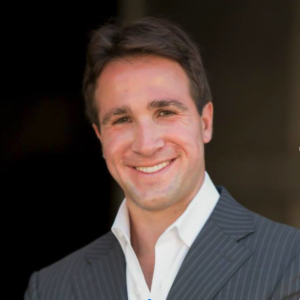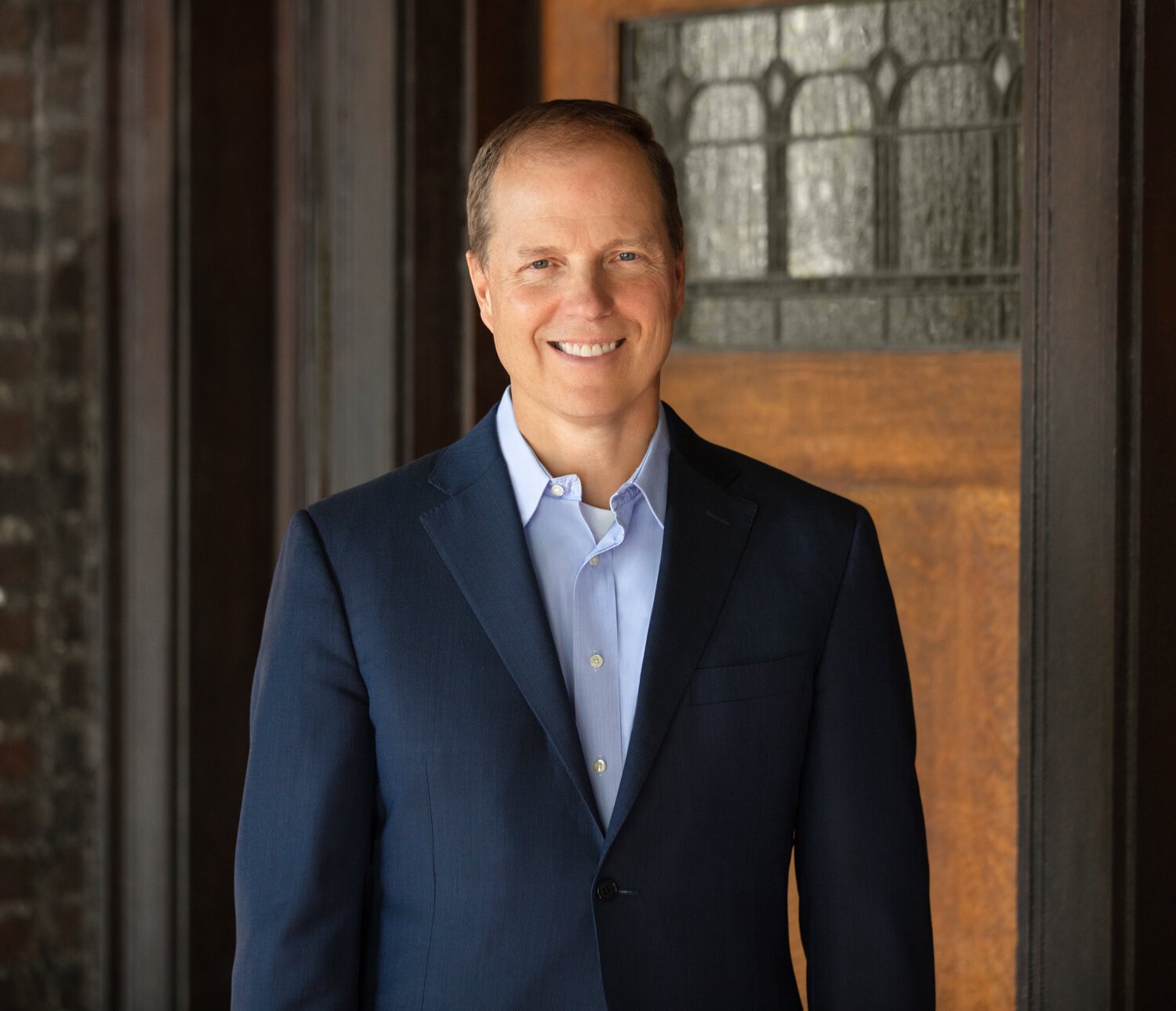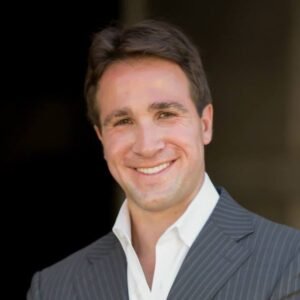I recently went one on one with Mark W. Johnson. Mark is the cofounder of the strategy and innovation management consultancy Innosight, with Clayton M. Christensen, and author of the new book Lead from the Future: How to Turn Visionary Thinking Into Breakthrough Growth.
Adam: Thanks again for taking the time to share your advice. First things first, though, I am sure readers would love to learn more about you. How did you get here? What experiences, failures, setbacks or challenges have been most instrumental to your growth?
Mark: Mostly, it was because I wanted to fly. My dad was a former Marine Corps pilot; he was disciplined and math-oriented and I wanted to be like him. But at the same time, my mother was an opera singer; very artistic, creative, and people-oriented, and she influenced me too. When I went into the Naval Academy, I embraced all of the structure, obedience, engineering, and science that went with my father, but I had an artistic streak too, and a strong interest in people and innovation. I drew on all those tendencies when I set out to lead an innovation and strategy firm. The other way I got here, just in general, was an appreciation of good leadership. From my military training and my own experience leading people in wartime, I gained a real appreciation of what a good leader could do. The big career setback that changed my trajectory was when the Navy eliminated its surface nuclear force (except for aircraft carrier which are commanded by pilots) and I could no longer see my way forward to becoming captain of a nuclear-powered surface ship. I decided to go to Harvard Business School, where I met Professor Clayton Christensen.
Adam: You have written extensively on the topic of reinvention. What are your key takeaways for entrepreneurs and business leaders?
Mark: Nobody that conducts a major transformation can predict precisely how it’s going to turn out; you have to approach it as a learning process. The key is to set a vision that lays out its principles, so that you have a north star to steer by. Then you need to be sure that what you’re working on today has relevance to it, and that your vision determines what you’re going to be working on going forward. Being open and exploratory, constantly enlarging your basic understanding and discovering the insights and information that you need to make the right choices, and having both the humility and the agility to pivot when you make the wrong choices. Most important is to understand that you can’t rush it. You have to go through the stages of incubation and acceleration before you scale, learning all the while.
Adam: What are the key elements to driving disruptive innovation? What can leaders do to foster a culture that fuels innovation? How can individuals position themselves to be as innovative as possible?
Mark: If you want to drive disruptive innovation, you need to understand the core principles/mechanics of it. It’s more nuanced and more principled than simply “moving fast and breaking things.” Truly major business disruptions almost always turn out to be moves that enable a larger and less wealthy or skilled population of people to be capable of doing something useful for themselves, versus having to do without or pay for the services of specialists in more expensive settings. Market-creating innovations enable non-consumers by breaking the barriers of wealth and skill. That’s what home computers did for publishing, what the Nespresso machine does for espresso making, what E-trade does for investing, and what LegalZoom does for routine legal work, to give you just a few examples.
What it means practically is that you start small and just good enough to get the customer’s job done; you can add features and functions and refinements over time. As Clay Christensen showed in his book The Innovator’s Dilemma, that’s what happened with inexpensive Japanese cars and minimills in the steel industry. The early Toyotas were boxy and loud and had a bumpy ride, but the customer could afford it and it drove them where they needed to go; the minimills made rebar much more cheaply than US Steel. Both gradually worked their way up-market. To apply these principles, you need to find out where there’s opportunities to serve non-consumers. Portable ultrasound devices found a market with OB Gyns, who no longer had to send their patients to radiologists. The other is to recognize that it starts with the consumer and the customer and the jobs they’re trying to get done in their lives. That’s the first step, creating the customer. Make sure you’re filling a need for your customers.
As for how to foster a culture that can create disruptive products and services, first, recognize the people you have who are creative and discovery-oriented and empower them. Second, recognize that if they’re going to develop something that is fundamentally different than your core business, they’ll need to create a different way of doing things—almost a separate organization. So, first find your innovators, and then help them create the structure and metrics they need to learn their way forward.
Adam: How can anyone create a winning mindset?
Mark: I’m going to second what Jeff Bezos said—that a big key to Amazon’s success is that they pursue ideas that will take seven years to mature while most companies are looking out three years. Just by working further out, you face less competition—and you give yourself the power to shape and ultimately own the market. Winning is anticipating where the customer is going, anticipating what will be important to the customer and then getting to work to develop it. Don’t worry so much about beating what the competition is doing today—you’ll win if you focus on the consumer and their needs and what you can do to meet them. And at the risk of repeating myself, I want to add that the other part of winning is learning—the organization that learns the fastest and pivots the most capably is the one that will win every time.
Adam: What are the key elements of corporate transformation?
Mark: You need to recognize from the outset that it’s not going to be a straight line from what you’re doing today, which is why we developed our future back method, in which you first visualize what you want to be in the future and then reverse engineer it. Having an inspiring purpose is critical to driving your vision forward, as Innosight discovered when we sought to identify the twenty global companies that achieved the highest-impact business transformations of the decade. The common denominator for all of them, we found, was having a newly strengthened sense of purpose. Siemens, for example, moved beyond a stated purpose of maximizing shareholder value and embraced an explicit mission of serving society instead. China’s Tencent declared its mission was “improving the quality of human life through digital innovation,” and then shortened it to “tech for social good.” Finally, to be able to do something that’s heavily involved with change, you’re going to have to pay a lot of attention to organizational matters—the people, governance system, team structures, resources, that are needed to do ensure success.
Adam: What are the defining qualities of an effective leader? How can leaders and aspiring leaders take their leadership skills to the next level?
Mark: My experience supports what John Kotter and Warren Bennis wrote in their books about leadership—that an effective leader sets the direction for the organization by inspiring and aligning people through vision. It’s important that they look ahead, not in the rear-view mirror, and that they create commitment and unity by communicating well. When you lead, you go to places that no one has been before, so you have to be able to learn what you need, which means having the humility to admit when someone else has the answer. Navigating through uncertainty is a big part of doing anything that’s new or complicated. Organizations are complicated; effective leaders can’t do everything that they need to by themselves—they need to bring their team along with them while drawing on their insights and listening to their criticism when it’s warranted. Having a collective view of the way the world works and where it’s going is always better than a singular one. Effective leaders are like King Arthur and the Round Table—they bring other leaders along with them, and they are the stewards of something that is greater than themselves. As Bekele Geleta, a former director general of the Red Cross once said, “leadership is a temporary role which is outlasted by the lifespan of an organization.”
Adam: What are your three best tips for entrepreneurs, executives and civic leaders?
Mark: Remember the customer and where they’re going—you have to anticipate as opposed to just reacting. Be a learner yourself and make sure your people learn. Manage for the short term, while always looking out to the future and evolving your point of view on it.
Adam: What is your best advice on building, leading, and managing teams?
Mark: Try to get them aligned not just on the facts but the core assumptions that underlie your vision. Get them to actively dialogue to develop a deeper alignment and commitment to what should be a truly shared point of view. One thing every senior executive we talked to told us when we asked them about their regrets, was that they’d been too reluctant to kick people off the bus when they were not aligned with their vision. So, don’t be afraid to take some people off your team if they are not contributing to it and don’t be afraid to put different people on the team, even if they aren’t in the C-suite. When you’re trying to transform or otherwise deal with change (which every leader does at some point), you have to have the best team. Make sure you do.
Adam: What is the single best piece of advice you’ve ever received?
Mark: Communicate, communicate, communicate. The better you are at communicating, the better things work. Be open and transparent in everything that you’re doing. This applies across your whole life, not just to business. Be honest, be open, and make sure that the people who rely on you trust you. The other thing I learned during Plebe Summer at Annapolis was the power of initiative. Be proactive; do what you can to make things happen.
Adam: How can anyone develop a winning mindset?
Mark: As an entrepreneur, I put a lot of stock in having a realistic optimism—when you set out to accomplish something, you have to have hope; you have to believe in yourself; in your team and in the future that you have envisioned. At the same time, you need grit, perseverance, and resilience so you can deal with your inevitable setbacks. Building something lasting was never meant to be a cakewalk. You have to work through a lot of adversity. A winning mindset includes both hope and the expectation of pain. Together, they will get you through tough times.









